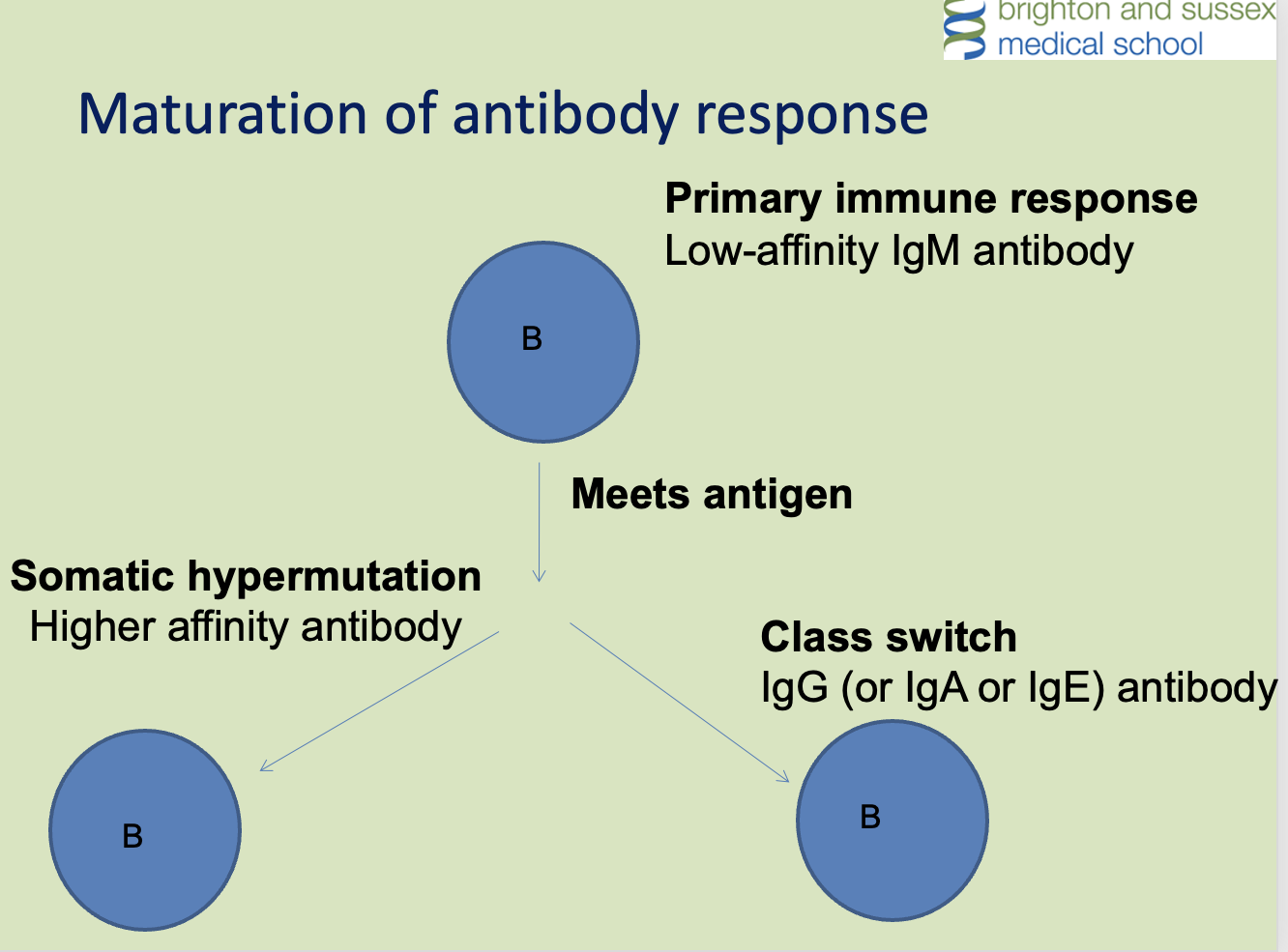T4 L6: B-cells and antibodies
1/24
There's no tags or description
Looks like no tags are added yet.
Name | Mastery | Learn | Test | Matching | Spaced |
|---|
No study sessions yet.
25 Terms
Define antigen-specific
The antibody binds to a particular antigen (eg measles) with high affinity, but not to other antigens (eg pneumococcus)
Label an antibody-antigen interactions
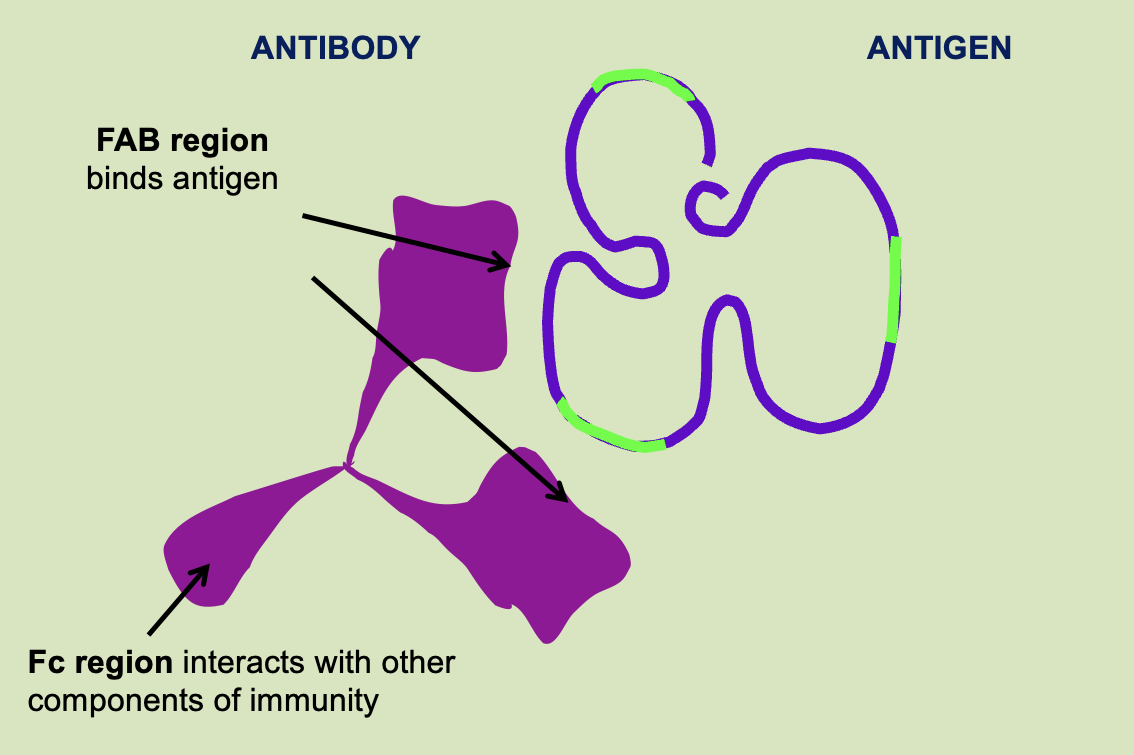
Label an antibody
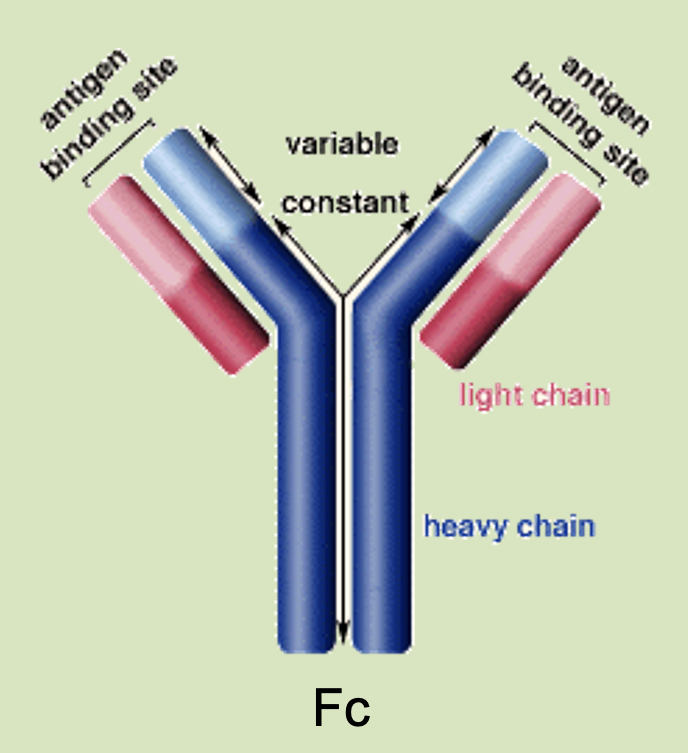
How many heavy and light chains are there?
2 identical heavy chains
2 identical light chains
What is the FAB and what is it made up from/
Antigen-binding site (FAB) is made up of light chains and heavy chains
Because this region needs to be able to bind any potential antigen, it is very VARIABLE between different antibodies; therefore also known as the variable region
What is an epitope
Antigenic determinant
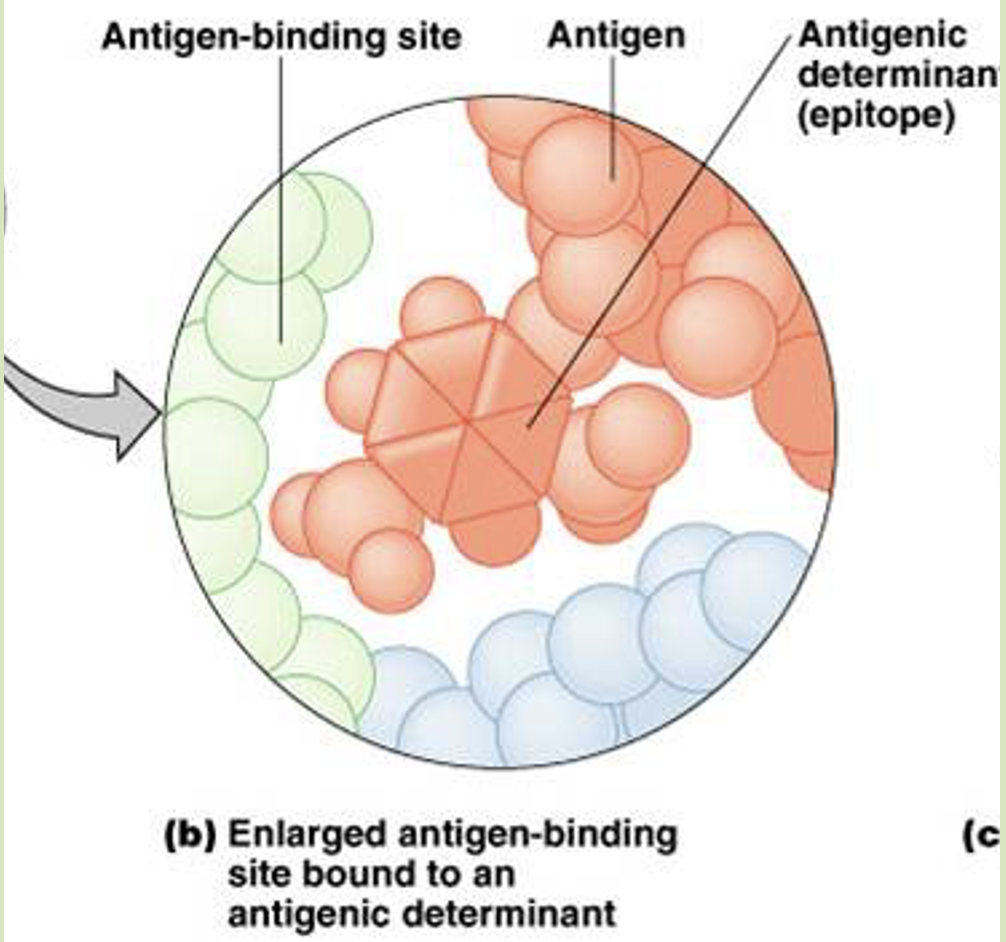
What is the Fc region?
Constant region is made up only by heavy chains
The Fc region at the ‘stem’ of the antibody interacts with other cells and molecules of the immune system
How do antibodies and B lymphocytes interact?
Antibodies attached to B cells
Each B cell produces only 1 antibody: all the antibodies on its surface are the same
Each antibody (and therefore each B cell) will be specific for particular protein antigens
In addition, antibodies are secreted into the bloodstream and circulate as free proteins
What do B cells do?
B cells each produce a unique antibody
The antibody comprises two heavy and two light chains, which combine to form a variable region that binds to a particular antigen
The basis of this binding is physio-chemical affinity for antigen epitopes
The antibody is expressed on the B cell surface as a receptor and is also secreted into the bloodstream
Another name for antibody
immunoglobulin
How many types of antibody isotypes are there?
IgM, IgD, IgA, IgG, IgE
Does the antibody isotype affect what ot binds to
Note that the antibody isotype
doesn’t affect what it binds to;
This is a function of the variable region
Summarise IgM
First antibody produced in an immune response
Doesn’t bind antigen very well (‘low affinity’)
Makes up for it by forming pentamers, which are held together by a joining (‘j’) chain
As immune responses progress, the IgM response switches to other antibody isotypes
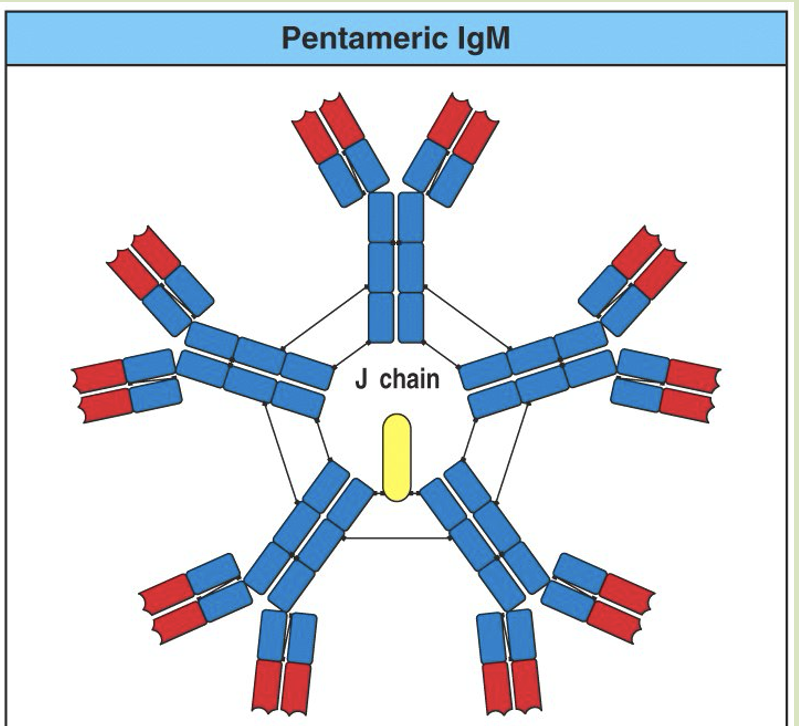
Summarise IgA
The only antibody that can cross mucosal surfaces
Found in secretions eg gut, tears, saliva
Forms dimers (joining ‘j’ chain)
Protected from digestion by secretory component (‘s’ chain)
Colostrum (forerunner of breast milk) is rich in IgA antibody

Summarise IgD, IgG, IgE
IgD: like IgM, the first antibody produced by a B cell, but has no known function
IgG: the main mature antibody form; circulates as a monomer
IgE: circulates as a monomer; exact function not known, but believed to be important in parasitic infection. Definitely important in allergic disease
How can antibodies help us?
By binding to things and directly affecting them
eg toxin neutralisation, receptor blocking
By binding to things then interacting with another element of the immune system
eg phagocytes (opsonisation), complement, mast cell activation, antibody-dependent cellular cytotoxicity
When bound to B cells: by acting as the B cell receptor (see slides 29 onwards)
Neutralisation by an antibody: clostridium Tetani
The bacteria clostridium Tetani releases a toxin that causes muscle contraction (tetanus). Tetanus immunoglobulin is effective for prevention after high-risk injuries and for treatment. The antibodies are taken from plasma donors
What is opsonisation?
This process of coating bacteria to enhance phagocytosis is called OPSONISATION
Bacteria coated by circulating antibody
Phagocytic cells have receptors for the Fc portion of the antibody
This enhances phagocytosis by reducing the repulsion between two negatively charged membranes
What is mast cell activation?
Mast cells have surface Fc receptors
Mast cells become coated wth IgE antibody from circulation
When the appropriate antigen binds to the IgE antibodies and cross-links them, the mast cell ‘degranulates’, releasing histamine
Important in dealing with parasitic infections
Inappropriately activated in allergy
What is Antibody-dependent cellular cytotoxicity?
NK cell recognises antibody-coated bacteria by Fc receptor; the target organism is then killed by non-phagocytic means.
Advantages of somatic recombnation
Huge diversity – we can recognise whatever is in our environment
A large numbers of receptors can be made from a smaller area of DNA
Everybody has a unique repertoire – resilient in different environments/ against emergent pathogens
Still inherit the gene segments, so get some benefit from evolutionary experience
Disadvantages of somatic recombination
The receptors are generated at random - many combinations will not work out:
Some can’t fit together biochemically
Some will bind to our own proteins (self antigens)
B cells with dysfunctional receptors mostly destroyed (deleted) – process is therefore energy intensive
Deletion of B cells that can recognise self-antigens is not complete – potential for autoimmune disease
What is clonal selection?
We all start with a unique set of B cells, each producing a single antibody; small number of each B cell
During infection, those with the best response to the infection antigen are selected out
Known as ‘clonal selection’ – division and selection of the ‘fittest’ B cells
What is the maturation of an immune response?
When the B cells divide in the antigen-driven process, they do two things:
Class switch: IgM in the ‘primary response’ switches to IgG. The variable region of the antibody remains the same
Somatic hypermutation: Random mutations are introduced into the variable region of the antibody, so the daughter cells produce a slightly different antibody. Further rounds of clonal selection pick out the best receptors
